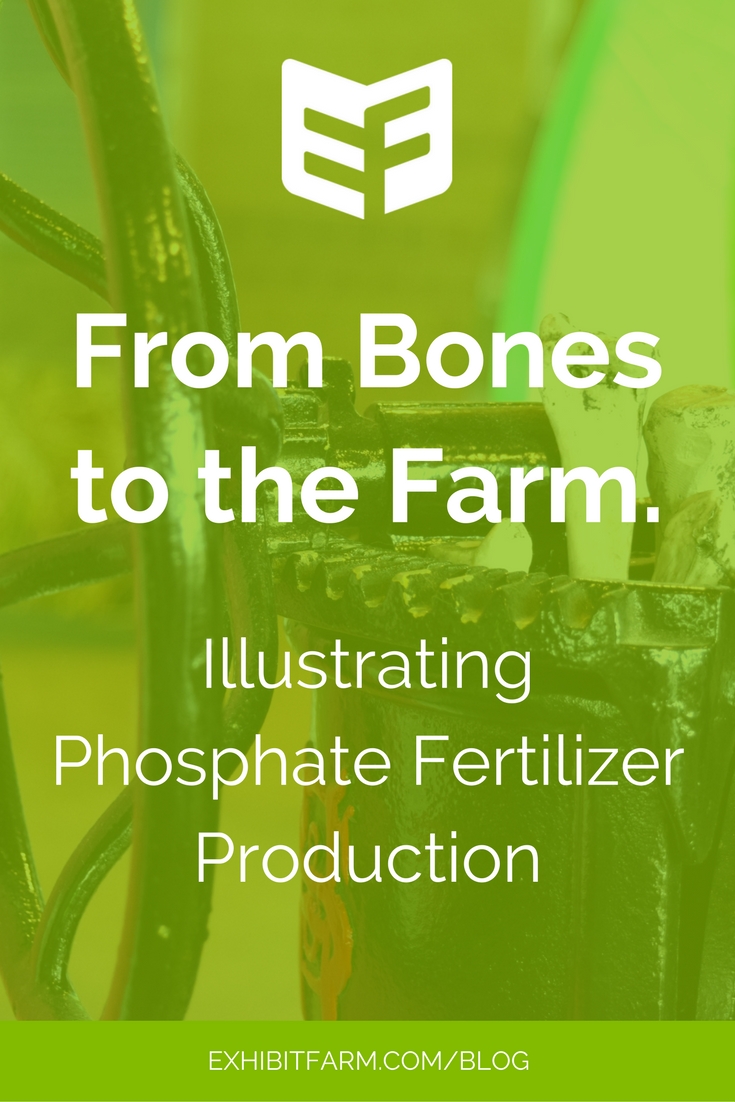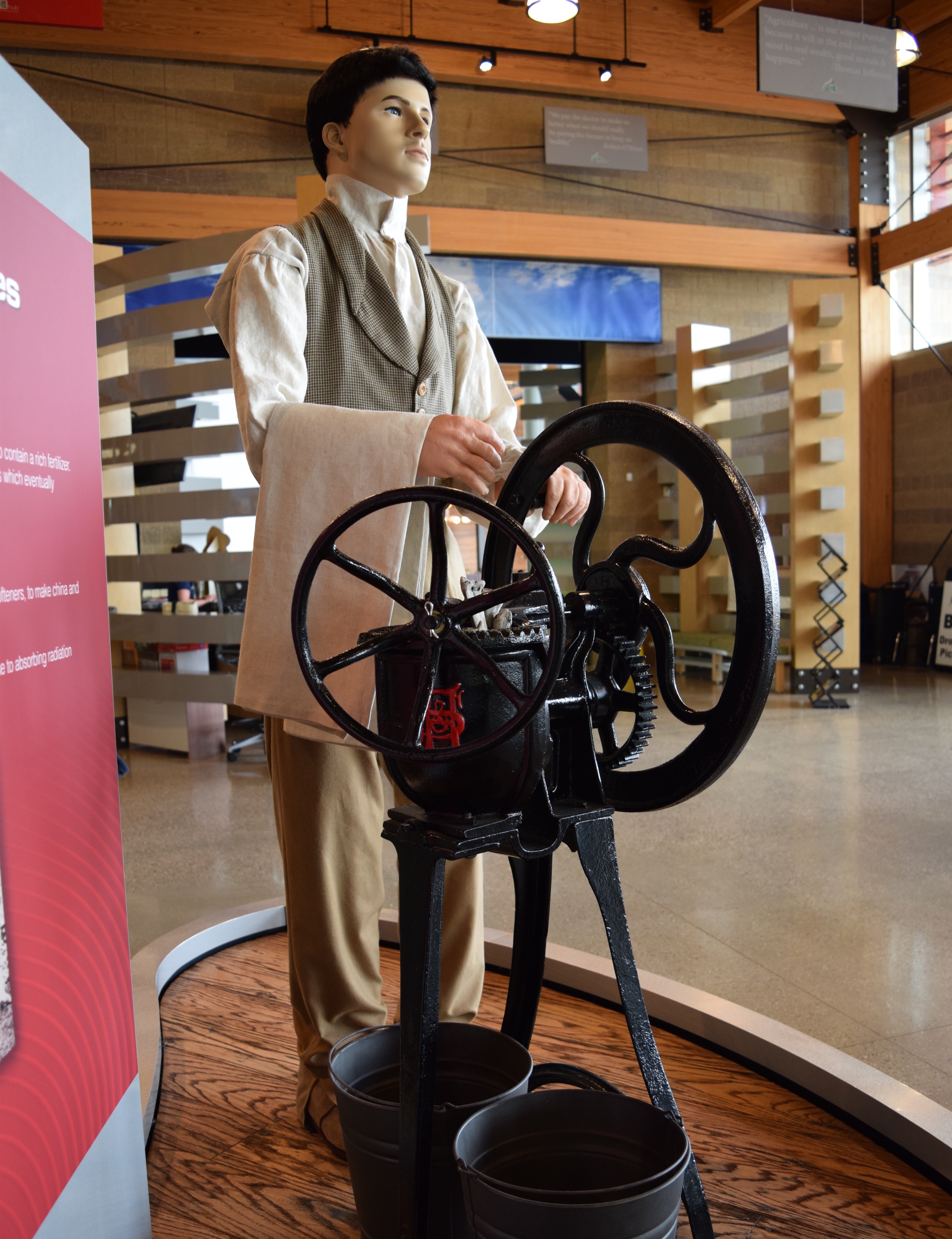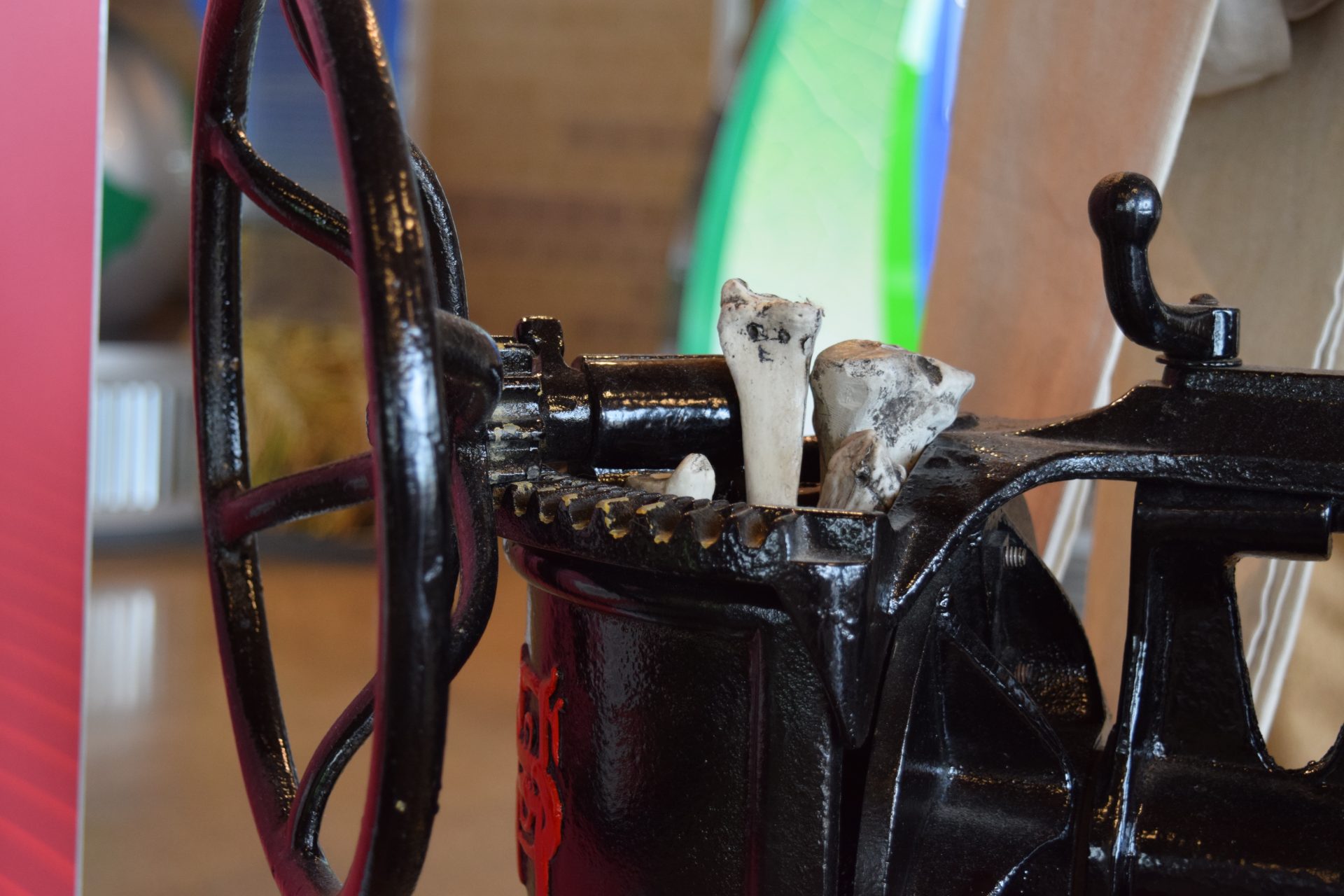Most people outside of the agricultural industry would never guess, but bones and fertilizer actually have a lot to do with each other. That’s why, in the phosphate production display at AgroLiquid, we used a mannequin to help illustrate this relationship and some of the history of phosphate fertilizer production.

(You can view this agricultural exhibit on our custom products page.)
The Bare Bones of Phosphate Fertilizer Production
Bone meal. Not corn meal—bone meal. It might sound a little wacky to the average, un-farmed consumer. But this stuff has had a big impact on the history of agricultural fertilizers.
Made by grinding up animal bones, farmers can use bone meal to fertilize their crops. The stuff serves as a great source of phosphate, a type of phosphorus needed to cultivate healthy plants. In 19th century England, agricultural development in the country relied on the production and trade of this unique fertilizer.
Even today, phosphate fertilizer is a top priority for farmers. It’s one of the three main nutrients crops need to grow, so getting enough high-quality fertilizer is very important. Most phosphate fertilizer isn’t made from bone meal anymore, though. Scientists developed more efficient methods of producing it in the mid-1900s.
So teaching about bone meal and phosphate fertilizer production helps give consumers the big picture of modern fertilizers. It shows them what the industry used to be like, which helps them understand how far it’s come.
 A Crank and a Mannequin
A Crank and a Mannequin
At the AgroLiquid IQhub exhibit, we tackled the task of teaching about phosphate fertilizer production using an innovative exhibit element. First of all, we dressed up a lifelike human figure in old-fashioned clothes. We stood this fellow up next to a vintage machine, as if he’s turning the crank. People used grinders like this ones to produce bone meal.
Next, we added some visuals. These included replica bones and a sand-textured material that represents bone meal. We put them in buckets around the base of the crank so that visitors could get a visual perspective on what the materials look like both before and after phosphate fertilizer production.
Text provides educational information about phosphate production and its place in agricultural history. Visitors can also activate audio by pushing a button.
(Source: “Bone Meal”)
